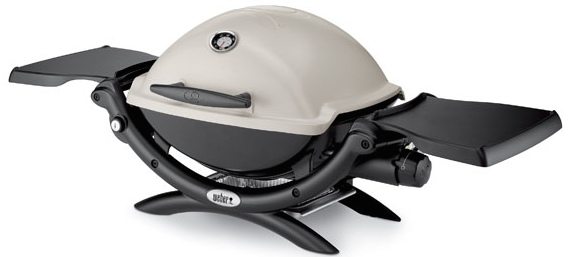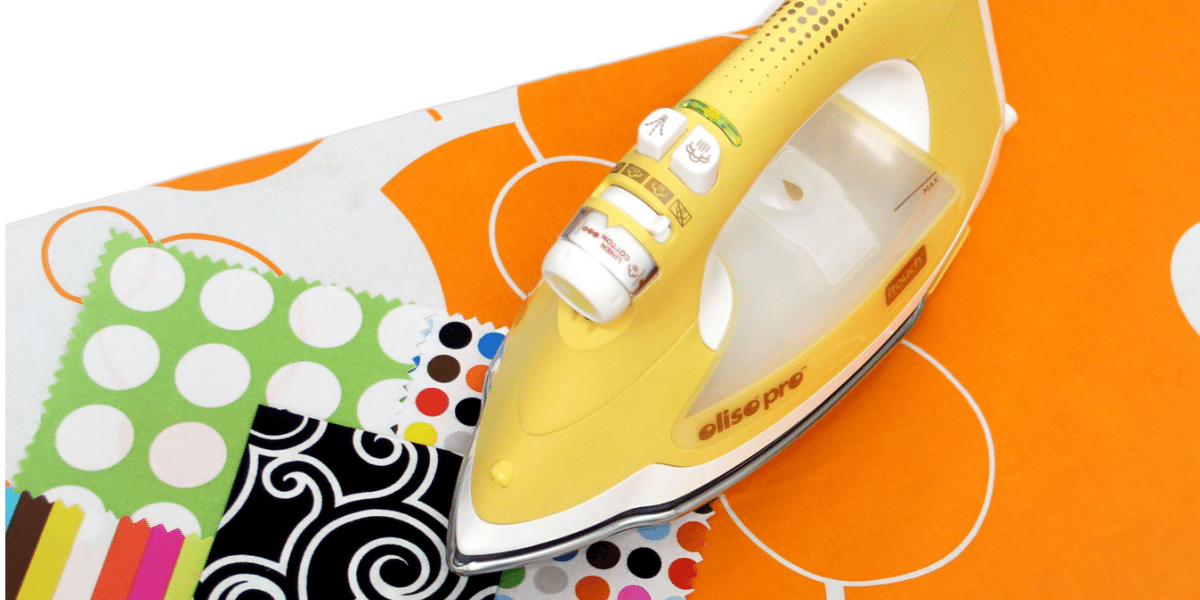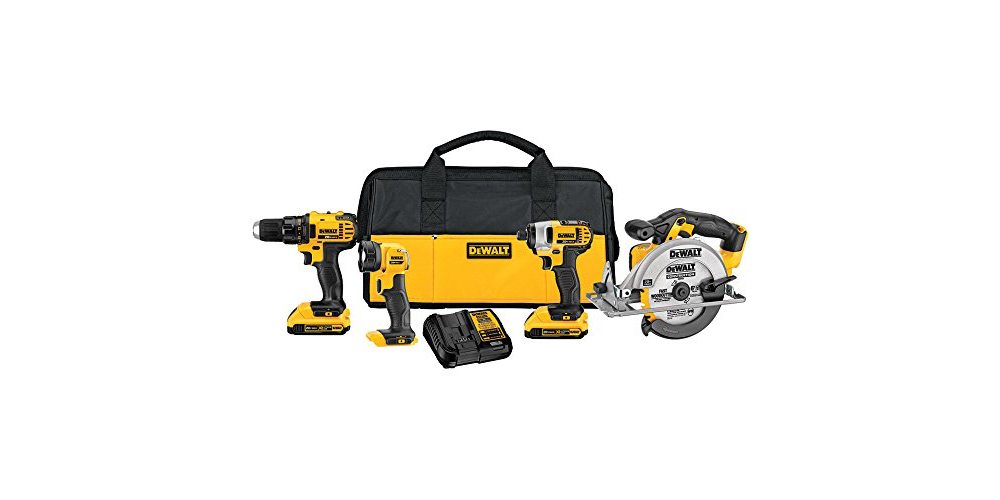As a frequent camper and grilling enthusiast, I’ve had occasion to put a few of the better known portable grills currently being sold through their paces. I thought I might share my experiences in case any of you happen to be looking for something to take camping, tailgating, or even for a back yard or balcony Fourth of July celebration. Each of the three grills reviewed is a portable model, intended for use with disposable 16.4 oz Propane cylinders. This review was originally run in 2010, but the models are still available — call them classics.
Weber Q1000 (Baby Q)
I’ve always been a bit of a Weber fanboy. While I use propane grills when camping, I’m a charcoal guy at home, and I’ve owned a number of Weber charcoal models over the years, including my current standby, a blue Performer with propane ignition.

The Baby Q served us well for several years with a design and solid build that reflects Weber standards. Its cast aluminum lid and body make it easily the most solid feeling of the three grills reviewed. The porcelain-enameled 189 square inch cast iron grill is heavy and easy to keep clean. A tubular, stainless steel burner delivers 8.500 BTUs. That’s on the low end, but I never had any issues cooking even thick steaks on the Baby Q. However, as our kids grew, its small capacity was simply too little to feed everyone without resorting to cooking in shifts. The push button ignition failed after the first year (same timing as my Performa come to think of it), but I always have a butane lighter when camping and never bothered to look into fixing it; it may just a matter of replacing the spark plug. Size is compact at 23.5 inches high, 27 inches wide and 15.9 inches deep. A cart and carrying bag are available separately.
Weber Q1000 (Baby Q) Propane Gas Grill is $169.00 at Amazon.
Plus: Solidly built (easily the most substantial feeling of the tested grills), affordable
Minus: Ignition failed after first year, too small for family of five
Napoleon Travel Q
I’m not sure what it is with the “Q” designation, but the portable grill I bought to replace the Weber Baby Q was the Napoleon Travel Q. I have to admit that this was the one case where my appreciation for a cool design aesthetic overwhelmed my sense of practicality somewhat. I started out to buy another Weber, but after seeing the bright orange, flying saucer-shaped Napoleon, I decided to give it a shot.

The Napoleon offers a significantly larger grill surface (a circular, 225 square inch porcelain-enameled cast iron grate) and a bit more power than the Weber at 10,500 BTUs. It has folding legs and on board tool storage as well. It’s not nearly as solid feeling as the Weber (the lid is quite thin), but it still doesn’t feel cheap. Size (folded) is 24 inches long by 24 inches wide by 8 inches deep. It develops sufficient heat to handle thick steaks, but with a single burner covering that round grate, there are definite hot and cooler spots.
One night, while grilling burgers, I had the lid closed with the heat on High, and the grease tray ignited, resulting in a flash fire that quickly scorched the lid and faded that nice orange finish. I had cleaned the grease tray before cooking, but obviously enough had accumulated to create a hazard and by closing the lid, I set the stage for a practical lesson in grilling safety. I suspect the very shallow depth of the unit may have contributed as well (only 8 inches compared to nearly twice that for the Baby Q). Lesson learned, I was always careful to keep the grease trap emptied when I had to close the lid and there has never been a repeat.
Another shortcoming, at least for anyone who cooks kebabs or hot dogs, is the lack of a lip around the edge. I don’t know how many times I’ve had something roll off this grill and onto the ground, especially when it’s sitting on a picnic table (which is seldom level). Our dogs appreciate this, but it’s a bit of a pain, especially if you have the grill filled to capacity.
The Napoleon, as battered as it looks, is now an auxiliary gas grill (mainly used for keeping things warm) in my back yard BBQ station. After six years of heavy use, it’s still fully functional, including the ignition.
Napoleon Travel Q Portable Grill is $189 at Amazon
Plus: Cool flying saucer design, handle makes one-handed carrying easy, solid performer
Minus: Lack of lip around edges makes it easy for food to fall off, shallow body might make grease fires more likely, somewhat uneven grate temperatures
Coleman Roadtrip LXE
A few years ago, with our kids growing (in size and appetite, not number), and the Travel Q having been retired to back yard duty, I went looking for something portable, but a little larger.

I seriously considered larger Weber Q models, but eventually went with a Coleman Roadtrip LXE. With twin burners, a 285 square inch grill and 20,000 BTUs, the Coleman had the size we needed. Even better, the Roadtrip is somewhat of a Transformer. It includes a built-in, folding wheeled cart with side tables (eliminating the need to take up table space at a campsite or buying and hauling an accessory cart), but still folds down to 46 inches long by 18 inches wide and 35 inches high. It’s definitely bigger than the other two grills, but still compact enough to slide in the trailer door, a car trunk or the back of most SUVs.
The cart is easily removable if you want to trim the dimensions significantly for travel. Even the porcelain coated cast iron grill grates themselves contribute to the Transformers theme. There are two; each is individually removable and can be replaced by optional specialty attachments like a burner ring or a griddle. I bought a full griddle top that replaces both grill grates, and it provided sufficient surface area and temperature control to cook (and keep warm) 3 dozen blueberry pancakes, plus scrambled eggs and bacon one morning when we had a few visitors, with no need to pull out additional frying pans or auxiliary burners. Like the other two grills, so far the Roadtrip has had no problems cooking anything I’ve thrown at it. However, the Roadtrip is thirstier than the other grills; if you expect to use it for extended sessions, consider an adapter to hook up a 20lb propane tank.
Coleman Road Trip Grill LXE: $146.99 at Amazon*
Plus: Plenty of room, includes a built-in cart/table and shelves, grill grates easily removed and replaced with specialized accessories such as a griddle, now the cheapest of the three
Minus: Biggest of the trio, with dual burners and 20,000 BTUs it goes through portable propane cylinders rather quickly
* The Road Trip Grill LXE used to be the most expensive of the trio (in 2010 it was listing for $219). However… Coleman has a new model out called the RoadTrip NXT 200 that’s now the “step up” grill with improvements like a 321 square inch grill, built-in thermometer and a taller lid. This is now the more expensive model at $249 ($213.74 at Amazon)
At the end of the day, which would I recommend? Honestly, they’re all solid choices. I do my research before buying a product, so none of these had a reputation as a lemon, but each is aimed toward a slightly different market. For a basic, dependable grill for a smaller family, the Weber Baby Q is tough to beat. For a little more room or for people who don’t mind others wandering over to the campsite to ask what on earth that orange thing is, the Napoleon works well and it lasts too. For space and flexibility, the Coleman grills are tough to beat and with their built-in cart they’re a no-brainer for a tailgate party.




